The Han Dynasty (206 BC - 220 AD) represents a golden age of Chinese civilization where art, particularly funerary art, reached heights of sophistication. This article explores the stylistic and technical evolutions that marked this foundational period.
Historical Context of the Han
Divided into two major periods - the 西汉 (, Western Han) and the 东汉 (, Eastern Han) - this dynasty saw:
- The peak of realism in funerary art
- The emergence of narrative painting
- The codification of 隸書 (, clerical script) calligraphy
- The expansion of artistic exchanges along the Silk Road
206 BC: Beginning of the Western Han (西汉, )
Funerary art reached unprecedented realism with terracotta figurines (陶俑, ) of remarkable expressiveness. These works reflect the Taoist belief in the continuity of existence after death.

Painted on vertical brick (73.8 cm), Balitai tomb, Luoyang
Exceptional demonstration of movement in Han art
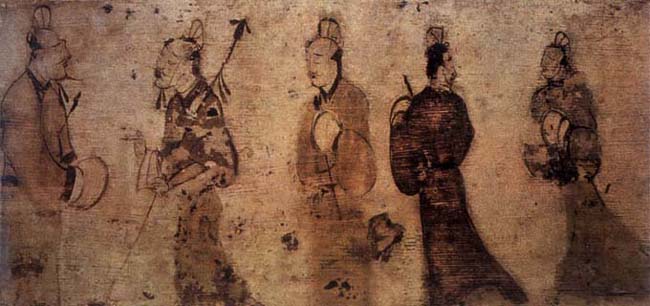
Painting on brick, Balitai tomb, Luoyang
Testimony of the social rites of the Han elite
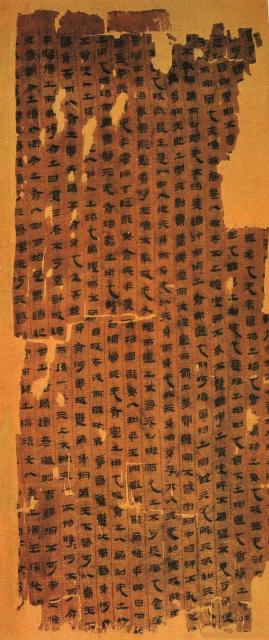
Tomb of the Marquise of Dai, Mawangdui (1973)
Precious example of standardized writing under the Han
Masters of the Western Han Era
- Mao Yanshou 毛延壽 () - imperial portraitist
- Shi You 史游 () - calligraphy theorist
9-25 AD: Wang Mang Interregnum
This brief period saw the expansion of Chinese artistic influence beyond its borders, particularly towards Central Asia. Lacquer and bronze techniques spread along trade routes.
25 AD: Advent of the Eastern Han (东汉, )
Art evolved towards greater serenity and movement. Notable developments include:
- The rise of stamped bricks 画像砖 ()
- The development of lacquer over bronze
- The peak of silk painting 帛画 ()
- The sophistication of everyday life scenes
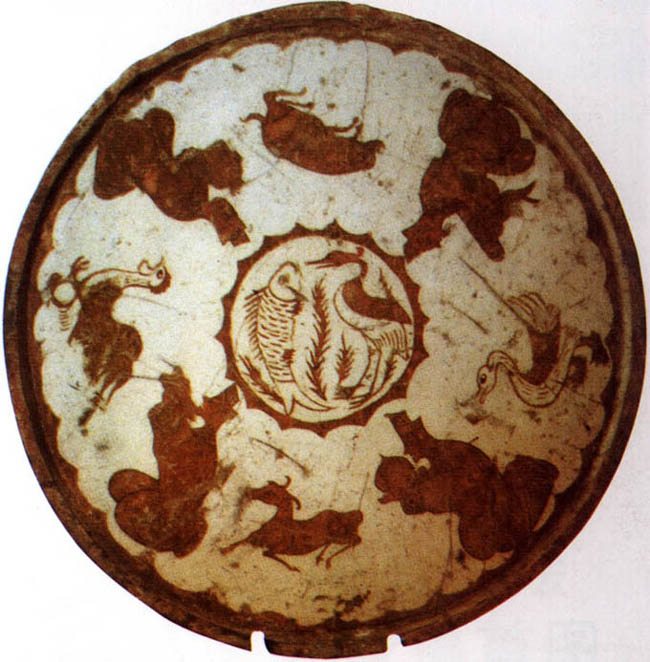
Painting on fired clay
Naturalistic representation of rural life
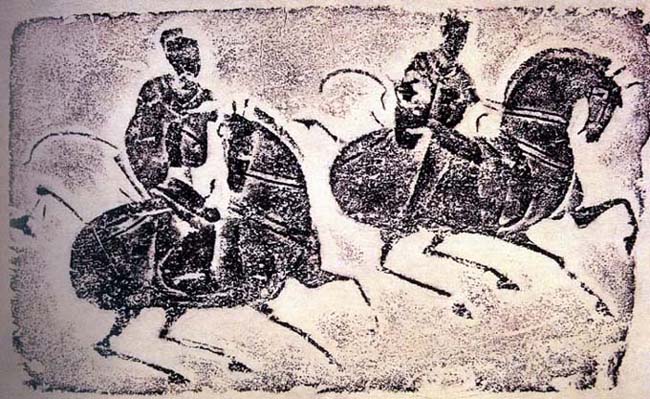
Wall painting (24.5x41 cm), Guanghan, Sichuan
Symbolism of social status in Han art
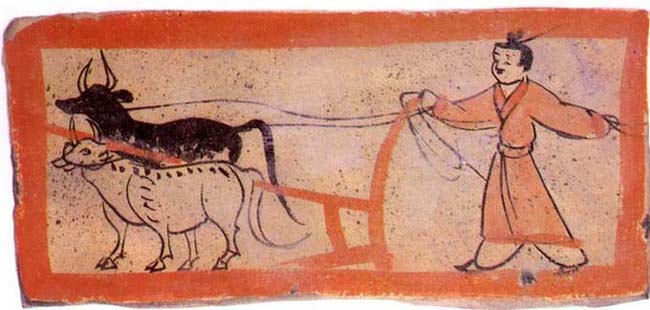
Wall painting
Valuable document on agricultural techniques
Notable Figures of the Eastern Han
Painters
- Liu Bao 劉褒 ()
- Cui Yuan 崔瑗 ()
- Liu Desheng 劉德昇 ()
Calligraphers
- Zhang Zhi 張芝 () - father of cursive script
- Cai Yong 蔡邕 () - theorist
- Cai Yan 蔡琰 () - poetess and calligrapher
Cultural Legacy
Han art laid the foundations of classical Chinese aesthetics:
- Development of pictorial narrative techniques
- Perfection of terracotta funerary statuary
- Systematization of calligraphic styles
- Integration of Confucianism into iconography
These innovations would durably influence subsequent dynasties, particularly the Tang and Song, and continue to inspire contemporary artists.
